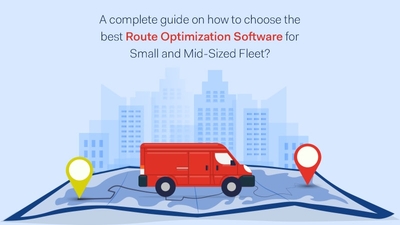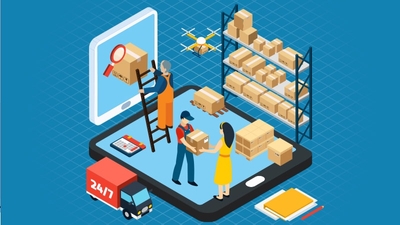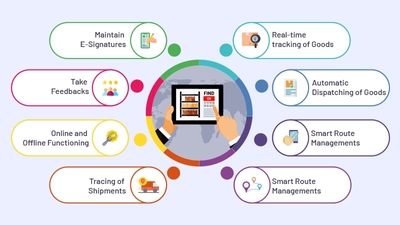Last year, Amazon lost around $8 billion from shipping.
Do you know why? The retail giant aimed to deliver the value-added service through shipping with free shipping, same-day delivery, and flexible delivery options.
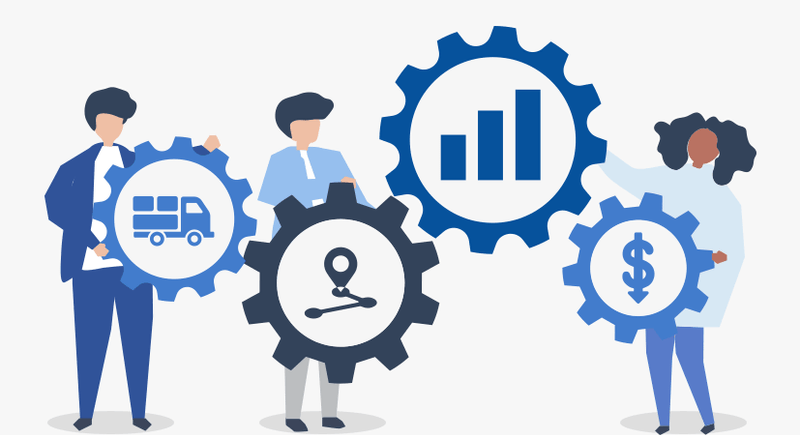
In the entire supply chain, the final leg of the delivery- last-mile delivery is the biggest cost driver that accounts for 30% of the supply chain costs.
The retailers competing against Amazon are also willingly losing a huge sum of money for last-mile delivery services, to continue the unabated growth.
The woes of retailers are deepening with a dramatic rise in the online orders and demands for speedy delivery.
A glance at the last-mile delivery cost scene:
In an attempt of making the customers pay a trivial amount or no amount for the shipping, the companies end up shouldering 25% of the delivery cost due to the gap.
Failed or delayed deliveries are even more expensive that costs around $70 billion to the retailers. The absorption of last-mile delivery costs by the retailers eroding the profits by 26%.
Catherine Smith, Target’s CFO, said: “Our third-quarter gross margin rate of 28.7% was lower than our expectations.
This was the result of higher-than-expected supply chain costs driven by last-mile delivery and the cost of receiving and processing a larger holiday inventory position compared with a year ago.”
It’s an alarming situation!
Neither retailers can afford to overlook last-mile delivery services nor save themselves from the decreased bottom line.
The middle road lies in pouring the money, efforts, and time into the last-mile delivery service optimization that meets customer expectations without impacting profitability.
It becomes feasible with last-mile delivery software development and advancing the solution with additional features.

** Here are a couple of things enlisted that showcase how making an investment in last-mile solution aids in diminishing the last-mile delivery cost by a great margin:
Automate order batching
In the on-demand economy, Uber has implemented the ride-sharing concept by allocating the ride-sharing booking requests to the drivers that are coming in the way of the current ride.
The algorithm matching all the ride requests and allocating to the drivers has resulted in increasing driver’s throughput and surge in profits.
Retailers can also use this tactic during order fulfillment by creating the batches for the orders in an automated fashion.
The intelligent algorithms automatically group the orders that are projected to go out in the same delivery window, at the same location, or with the same driver.
The order batching process decreases the number of drivers put on the road to deliver the order and on-time deliveries can be made possible, which in turn, reduces the last-mile delivery cost.
Routing optimization
No matter how good your drivers know the local areas and the routes, but when unanticipated and unforeseen obstacles such as traffic congestion, changes in weather conditions, construction closures, or natural calamities come up, the drivers become inefficient in planning optimal route.
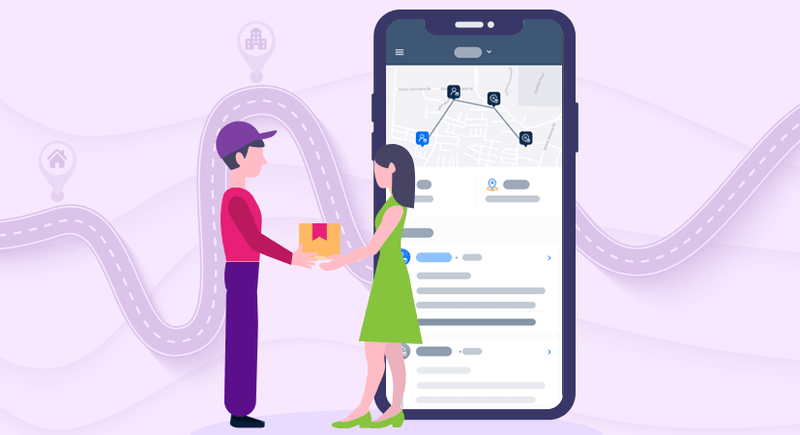
The last-mile delivery route planning cannot be accomplished using pen and paper.
The manual routing proves to be a costly mistake alongside making the deliveries harder. Besides, wasting hours in designing route plans and delayed deliveries that upset your customers are the by-products that you will receive.
The best way out is embracing a last-mile delivery application that makes the routing efficient by creating an optimized route plan for the drivers based on the traffic congestion, time arrival estimation, and weather and climate conditions.
Additionally, the routes can be dynamically re-routed and informed the same to the drivers when unexpected things are foreseen by the system.
In this manner, the software is making the routes economic and efficient with the mitigation of time, and fuel consumption per delivery.
Thereby operational costs get diminished which ultimately positively impact the final leg of the supply chain.
Load distribution optimization
The vehicles leveraged to load the allotted orders should not be overloaded or under-loaded that negatively affects the resource utilization.
Going conventionally, it’s difficult to ensure the complete space of the loading vehicle is optimally used and response time is low, which never allow the retailers to achieve the goals.
The last-mile delivery solution helps in optimizing the load distribution on the vehicle by making certain the complete loading space is utilized to its full capacity.
The digitization of information showcases the retailers whether the truck is fully loaded, partially loaded, or there is some space to allocate a few more orders that aids in maximum resource utilization and results in transportation cost reduction.
Create multiple avenues
Arranging the last-mile delivery from the production site to the warehouse and then arranging the deliveries through different distribution channels to the urban customers eats up a lot of time and cost of the delivery.
Leveraging multiple fulfillment locations such as urban warehouse, dark stores, and backroom of retail outlets enable speedy deliveries at a reduced cost.
By building the warehouses in urban areas (High population density zone), the retailers can eliminate the thousands of middle distribution channels and make the supply chain responsive at a lower cost.
The dark stores with a store-like layout which acts as a transportation hub for the online orders are also getting popular. The stores provide an option to the customers to pick up the orders in a defined window that spares the retailers from arranging the last-mile delivery service.
Various alternate vehicles
The preferences of fulfillment vehicle play a critical role in on-time deliveries because one type of vehicle say truck cannot be a perfect fit for order delivery purpose everywhere, be it urban area, suburbs, and countryside.
The varying geographical conditions, traffic situations, and restrictions require a specific type of vehicle to be put on the road to execute the deliveries.
For instance, using motorbikes for the countryside’s order fulfillment among the alternatives of cars, vans, and trucks is the best to opt for ensuring full vehicle fill rate, and truncating the time and fuel spent on the road.
GPS tracking
Keeping tabs on the drivers while they are on the road is-all important to make sure they meet the estimated arrival times.
The unsanctioned breaks, crossing speeding limit, and idling results in wastage of time and fuel that in turn, increase the last-mile delivery cost.
The Last-mile logistics management system can help you know what the drivers are doing in the real-time with GPS tracking feature.
The GPS tracking allows the retailers to verify that every driver is taking the defined routes, driving under the speeding limit, and doing what you want them to do.
When there is any variation detected in the pre-defined parameters, the retailers are instantly notified to take the proactive action.
Good return plan
More online orders are returned as compared to brick-and-mortar store orders. The easy and free return is a stimulus factor behind online shopping, but reverse logistics increase the last-mile cost.
The return cost in almost 26% of the delivery cost that can be reduced by motivating the customers to return the product to the nearby store.
For instance, Alibaba is alluring the customers with a combination of online and offline experiences where the customers are encouraged to return the product to the store.
Around 40% of the orders returned at the store that has increased the profit margin by 7% due to lower reverse logistics cost.
Crowdsourcing
Hiring the in-house drivers and owning vehicles for the order delivery is expensive as opposed to piloting crowdsource delivery platform where the retailers collaborate with customers or independent drivers to deliver the orders.
Walmart- the retail giant has taken the initiative with Spark delivery (Crowdsourced delivery platform) that has brought financial advantage to the retailer in terms of inexpensive collaboration with freelance drivers as compared to in-house staff recruitment, no headache of vehicle management, and scaling up or down the staff level according to peak season or normal days.
Marshall Hughes, founder of Passel, a crowdsourcing startup in Australia said, “The consumers are willing to deliver the products in the neighborhood in the exchange of a couple of bucks, and not looking the job as delivery agents.”
Summing it up
The last-mile delivery is no more a buzzword in the logistics industry. Presently, no online retailer can hold on to the past considering it as the most expensive part of the shipping process, else soon, they will not find themselves relevant to the customers and retail space.
But, mastering last-mile delivery conundrum is not an easy undertaking. It requires the retailers to strike a balance between customer’s delivery expectations and maintaining the profitability.
Order batching automation, route optimization, load distribution optimization, creation of multiple fulfillment center, using a fit-for-purpose vehicle, availing GPS tracking feature, having a good return plan in place, and creating a shared delivery platform are a couple of tactics that help retailers to better deal with last-mile delivery cost issues and boost profitability. Don’t hang fire! Embrace it now.


